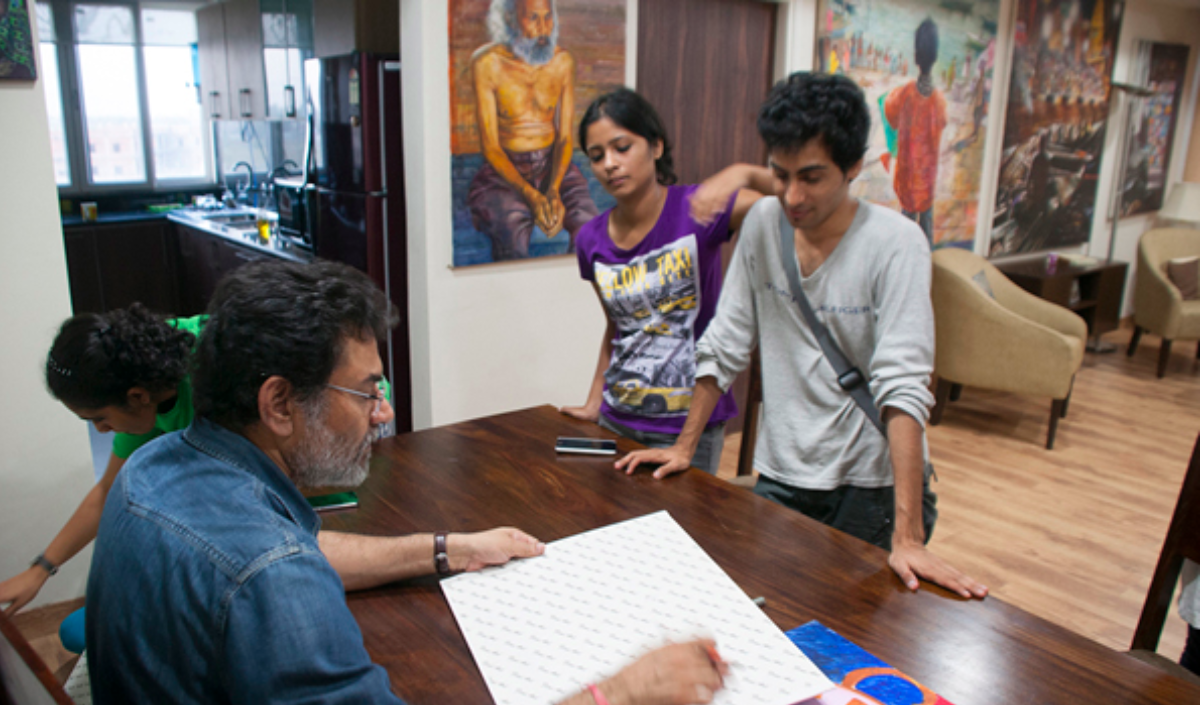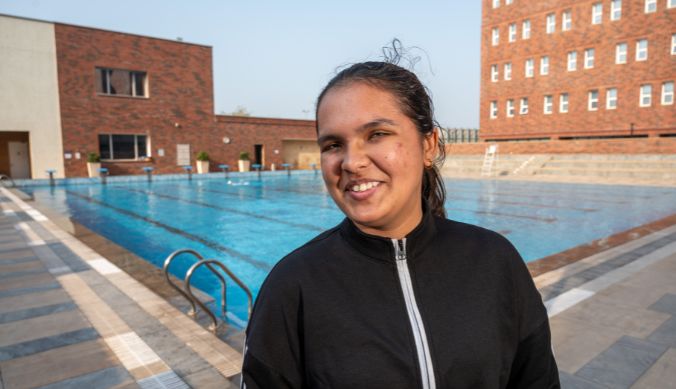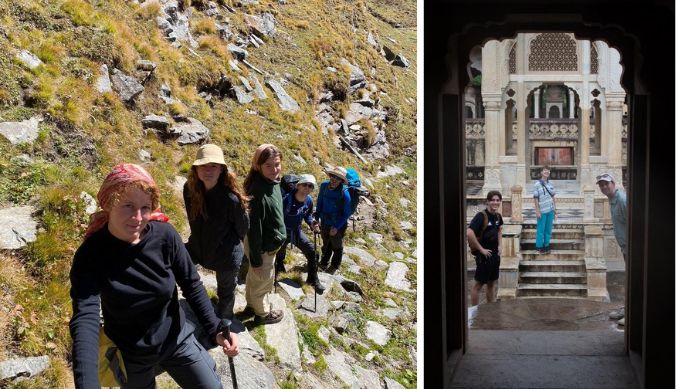An Artist, Professor and Mentor
Sayali Palekar, an undergraduate student at Ashoka profiles Dr. Anunaya Chaubey, Deputy Dean, Young India Fellowship and Professor of Art Appreciation at the University.

Office of PR & Communications
30 June, 2015 | 8 min readMy interest in Dr. Chaubey’s oeuvre came from two directions: the first was my meagre reading in art history that had created a growing love for the subject. The second was the context with which I came to be acquainted with him. I am not his student but I visited his apartment in the University’s faculty housing block as a tag along friend with one of his pupils. His immense talent surrounded me that day; the walls were crowded with his highly detailed, impressive, and engagingly modernist works of art, under pools of golden light.
After my first encounter with him, I requested Dr. Chaubey to let me interview him. He was generous in granting me time as he was in his narration about different aspects in life and of art.
I remember being taken aback by the amount of art in that apartment. As he spoke, I noted that unique combination of humility and high caliber in him.
Talking to Dr. Chaubey is often the experience of two insights chatting— ah-ha-ing at each other’s discoveries. It was a means both to placate and frustrate the mind, and to laugh and joke and speculate with the surety of reason.
As our interaction got more and more detailed, we travelled back in time to the year 1999, which is when a younger Anunaya Chaubey was offered the position of Principal at the University of Patna’s College of Arts and Crafts. Dr. Chaubey was, in many ways, entrusted with the job of refurbishing the place.
Dr. Chaubey had received his master’s and doctoral degrees in English Literature; he was also a gifted, self-taught artist. His position as the Principal of the College of Arts and Crafts allowed him, therefore, to be creative and administrative at more or less the same time. He worked to get qualitative, permanent faculty for the Patna College. He worked to put together an expansive gallery of art. At the same time, he trained his students in both the technicalities of art and the types and forms of literature. This position, alternating between the teacher who engaged deeply with his students and the principal who planned with foresight, proves Dr. Chaubey’s belief that the administrative and the abstract do not have to exist in divorced domains, that one individual may possess both qualities and yet execute the entirety of his goals to his or her satisfaction.
Prof. Chaubey on his works of art and his association with Ashoka
Talking about the precision of images in his work, he mentions his own rationale for creating art, for replicating real life objects and people in his paintings, with an incredible amount of detail. “Technique, reason and organization,” he says, “are important. The object itself assumes a value. Abstraction then becomes unnecessary.”
Dr. Chaubey had his first art exhibition (part of a quick succession of exhibits) in the early 2000s, upon receiving encouragement from Dileep Padgaonkar. In the following years, he continued to work as the Principal of the College of Arts and Crafts. In 2007, however, after working to improve the quality of the education and the breath his students’ learning, he felt he needed to take a break, which in turn prompted him to travel to Paris that same year. He lived on the Left Bank, painted, met other artists, explored museums— all in the thriving charm of Paris.
By the time he returned, his classmate from college, Dr. Pramath Raj Sinha (now one of the founders at Ashoka University) was filling him in on the details of this University he wanted to build: a progressive, liberal arts university. And once Dr. Chaubey had affiliated himself with the enterprise, there was no looking back. Today, in his capacity as the Deputy Dean of Ashoka University’s Young India Fellowship, he looks after student interviews and recruitment, in addition to teaching a course in art appreciation to the Fellows.
Dr. Chaubey is one of the many interesting minds that went into the creation of Ashoka University. He is made unique by his oeuvre and his history as an artist and an administrator, a critical-creative person. “The artist has to be his own critic,” he says. “There has to be a dual sensibility.” Not an ‘or’, but an ‘and.’ And this just confirms the notion that we at Ashoka are lucky to have Dr. Chaubey—very lucky indeed.













